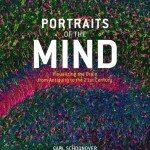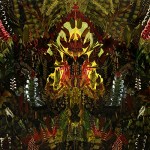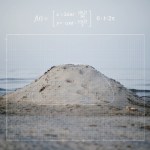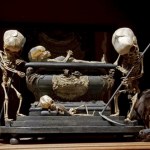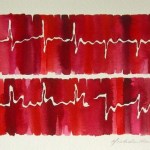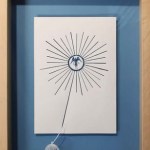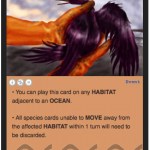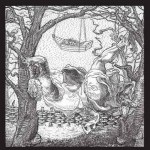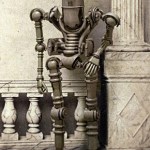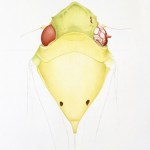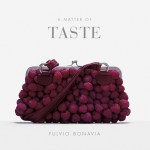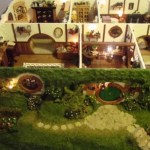Artists & Art
And now for a completely different type of glass art: this time from sculptor Luke Jerram. His deceptively beautiful glass malaria parasite (see video below) will be auctioned off to benefit Malaria No More.
Via Medical Museion. The "malaria parasite" is also known as Plasmodium falciparum. Read more about Jerram's sculpture here - no, I don't know when the auction will be, but I imagine he'll update his website with the news.
Reader Miles suggested Danny Cooke's graceful documentary about ornamental glass & sign artist David A. Smith, who uses traditional techniques like gilding, silvering, and etching to create ornate glass signs and windows with aesthetics from Victorian to Art Nouveau. Time-lapse sequences offer a surreal glimpse of Smith dexterously floating giant panels of glass around his studio, gently pressing them against grinders to carve the distinctive beveled patterns and fonts so familiar from vintage pubs or storefronts.
David A Smith - Sign Artist from Danny Cooke on Vimeo.
Particularly if…
What do you get when you ask Harvard physicist Lisa Randall to curate an art show? A Los Angeles gallery found out, and Wired has the story. My favorite quote:
I asked Mays whether the artists gained an appreciation for physics. "Oh god, yes!" he said. "I've seen them carrying books around about different scientific theories."
No! Not artists with books of scientific theories! The world is upside-down!
Coverage of the Measure for Measure exhibition is here - it sadly closed last weekend, but there are photos online, and I tracked down a few of the sciart contributors, Meeson Pae Yang (with an…
This, this and this all came close, but in the end, it took a book: a yummy new neuroscience, history of science, beauty of science, wow-brains-are-beautiful book.
The other day I heard about something that I just HAD to blog, hiatus/retirement be damned! Portraits of the Mind: Visualizing the Brain from Antiquity to the 21st Century, a new book by neurobiology PhD candidate Carl Schoonover, is coming out in a few weeks, and I'm lucky enough to have a preview copy sitting here before me.
This book encapsulates my original vision for BioE - a narrative that brings science history together…
In the New York Times, a quick article on a study in the journal Neurosurgery by two Johns Hopkins professors. The abstract argues that Michaelangelo
concealed another neuronanatomic structure in the final panel of this series, the Separation of Light From Darkness, specifically a ventral view of the brainstem. The Separation of Light From Darkness is an important panel in the Sistine Chapel iconography because it depicts the beginning of Creation and is located directly above the altar. We propose that Michelangelo, a deeply religious man and an accomplished anatomist, intended to enhance…
The God Particle, 2008
Andy Harper does amazing work with oils: fantastic gardenscapes populated with unanticipated plants. Many of his works incorporate dramatic symmetry, reminiscent of a Rorschach blot or the patters on a flowerhead.
Half Devil, Half Buccaneer
Read an interview with Andy Harper at failedrockstar.
Wired published a gallery a few months back featuring the art of Nikki Graziano, a math and photography student at Rochester Institute of Technology, who combines photos with equations. Her Found Functions series is awesome - I love the way she spots functions and patterns in nature.
Joanna Ebenstein of Morbid Anatomy has just unveiled a new website, the Secret Museum, to house her "exhibition of photographs exploring the poetics of hidden, untouched and curious collections from around the world." So if you can't make it to her show in NYC (through June 6), you can browse her virtual exhibition of photos - like the eerie fetal skeleton tableau above (from Paris, circa 17th century).
DC area artist Michele Banks works with wet-in-wet watercolor to create abstract paintings of biological subjects - lots of cells, mitotic spindles, etc. You can see more of her work at her Makers Market shop (under the nom d'art Artologica), or at the SoWeBohemian Festival in Baltimore this weekend.
Susan Silas takes photos of fallen birds - and they're oddly touching. It's very strange how songbirds remain graceful, even when broken and half-decayed. . .
My friend Shana mentioned this one to me: it's an LED sculpture that opens at night and folds closed during the day, like a light-sensitive flower. The creator, Wendy Legro, says: "The sun is our natural light source. Our homes are filled with artificial light replacing it, undeliberately disrupting our biological clock. This product works autonomously with a light sensor. During the day, mechanical flowers are closed enabling sunlight to come in. When sun sets, the flowers open and start to emit light. In this way, awareness for a beautiful phenomenon will be brought back."
I'm not usually…
An email from reader Jake prompted me to repost this look at Peter Callesen, originally posted back in 2007. Enjoy!
Angel, 2005
paper and glue in artist made frame
Peter Callesen
This beautifully written essay at Cabinet of Wonders, Mechanical Thinking and the Human Soul, includes some amazing sculptures by paper artist Peter Callesen. Callesen's A4 papercut series are razored from a sheet of paper and assembled, still tethered umbilically to their mother sheet, yet folded and glued into a 3D shape that responds to the original 2D negative space they departed.
Halfway through, (detail),…
As you may know, the Phylo (Phylomon) project is crowdsourcing a collection of ecology-based trading and gaming cards, in the hopes of supplying kids with a more engaging way of learning and thinking about their environment. And here's a timely addition: the Oil Spill, with very nice artwork by Stephanie Tan. Scientist-artist types: have ideas, or artwork, to contribute to Phylomon? Check out their website for more info!
This is the clever label for Chateau Skulls, a grenache blend from south Australia. Wikipedia sez,
The label is an original artwork by István Orosz (b. 24 October 1951; Kecskemét) Hungarian painter, printmaker, graphic designer and animated film director, is known for his mathematically inspired works, impossible objects, optical illusions, double-meaning images and anamorphoses. The geometric art of István Orosz, with forced perspectives and optical illusions, has been compared to works by M. C. Escher."
I blogged about Istvan Orosz earlier, in this post on anamorphosis.
From Mechanical Brides of the Uncanny by Edward Bateman
In "Mechanical Brides of the Uncanny," artist Edward Bateman creates images that explore photography's role as historical evidence. Presented as a collection of discovered carte de visites, this book documents a forgotten age of mechanical wonders. Carte de visites were an immensely popular form of photography in the last half of the nineteenth century. They were widely traded and collected, with subjects ranging from portraits of everyday people to those of luminaries. Bateman uses this history to question the idea that all…
Der Mensch als Industriepalast [Man as Industrial Palace] from Henning Lederer on Vimeo.
So awesome! Fritz Kahn's poster reimagined as an animation by Henning Lederer. Via Bora.
Cornelia Hesse-Honegger's beautiful book Heteroptera is one of my most treasured natural illustration collections. Unfortunately, it seems to be out of print now, but Wired recently compiled a gallery of her work, and I highly recommend a visit.
The subtle and not-so-subtle asymmetries on Hesse-Honegger's specimens, like the cyst-eyed cicada above, are latently sinister: these are insects collected near Three Mile Island, Chernobyl, nuclear plants, and sites downwind of nuclear test grounds. Are the defects Hesse-Honegger catalogs a telltale sign of environmental contamination? Or is she…
A German home improvement company turns an old apartment building into a modern wonder cabinet, as part of an ad campaign: first they covered the facade with a flock of shoes (Dr. Isis must have been their muse) and then they installed concept art throughout the whole thing (some of it nuts, and some of it pretty remarkable). They won a 2009 Mobius Award for their work. Check it out:
I think we'd all like to have the room with the giant air mattress/bubble in it. Mmmmmmm, sleeping on a giant bubble.
Now that's bioephemera: my friend Rhett sent me a link to the work of Fulvio Bonavia, who created a series of eighteen photographs of food reimagined as haute couture. My favorite? The glassy-eyed sardine-link belt. See all eighteen images, and his other work, at his website.
Via Coute Que Coute.
My friend Jacob just sent this to me and I had to pass it along.: it's a Bag End dollhouse by Maddie Chambers, apparently one of the most patient people in the world. Amazing and adorable! Can I have a full-sized one please?
